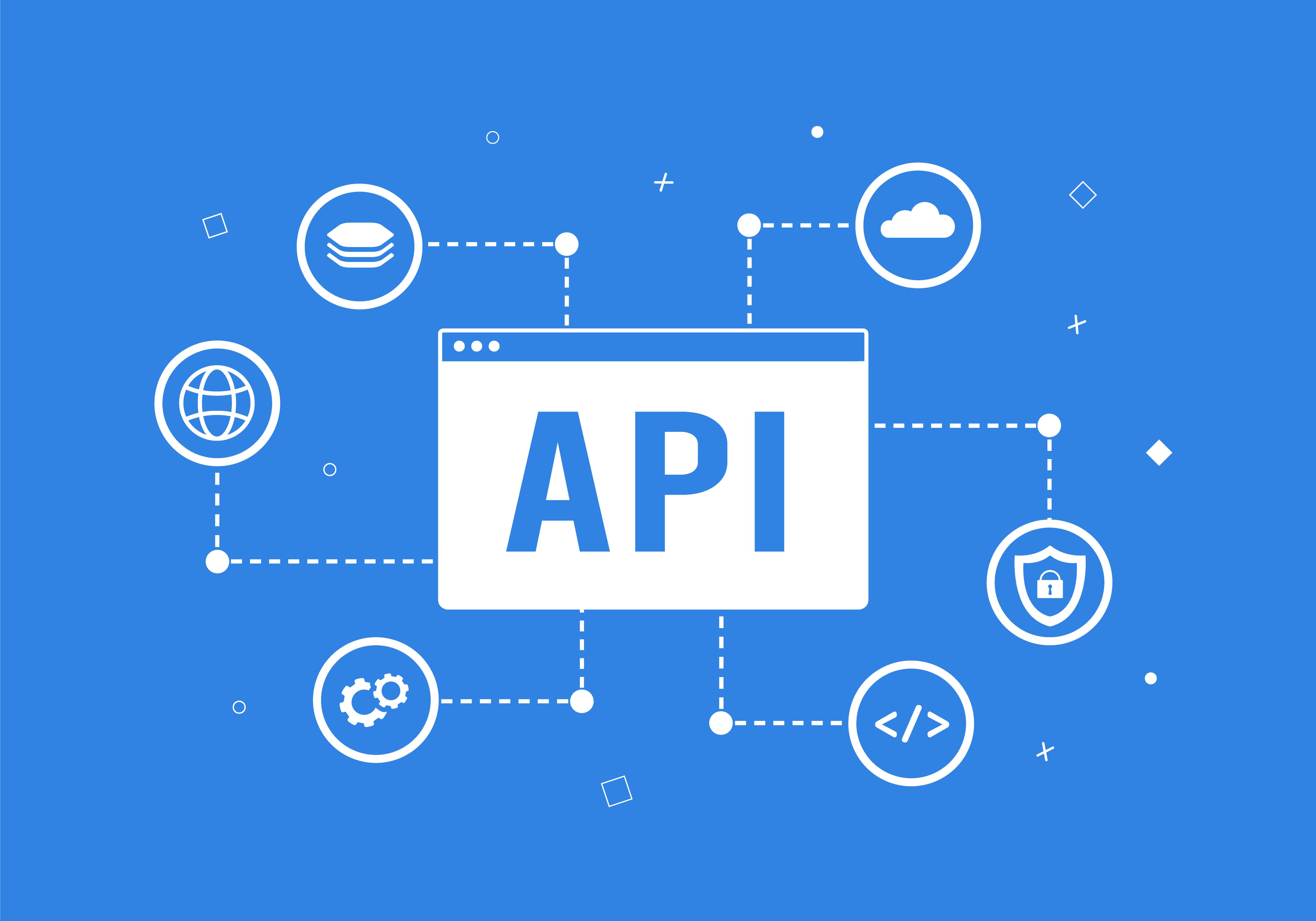Ever feel like you're playing a never-ending game of digital Jenga? Trying to delicately balance different software applications, each with their own set of rules and languages. It only takes one misstep to make the entire structure topple over.
I've been there too. It's exhausting, isn't it?
Enter API integration. This little-known hero swoops in and seamlessly connects these differing systems, enabling them to communicate fluently in a universal language. Just imagine - no more constant manual data transfer or compatibility issues!
Sounds like magic? Not quite! But by the end of this read, not only will you have unraveled the mystery behind API integrations work but also discovered cost-effective ways to build your own api integration.
Exciting API integration tools are out there, specifically designed to dramatically simplify this process and give your productivity a serious boost. These tools offer a range of functionalities that can integrate disparate systems effectively, making your digital workflow more efficient.
Understanding API Integration
API integration, short for Application Programming Interface integration, is the connection between two or more applications using their APIs, enabling them to pass data back and forth. It's a way of bridging different software systems together, allowing them to work as one cohesive unit by efficiently passing data.
The process of API integration involves creating a system where multiple APIs, potentially hosted on remote servers, can send and receive information from each other seamlessly. By integrating with a remote server, these APIs ensure that data transfer and system communication are efficient and secure. This intercommunication helps businesses automate tasks and create smarter workflows by leveraging existing software tools.
The Benefits and Importance of API Integration
In modern business landscapes that are increasingly reliant on technology, understanding API integrations becomes paramount. Why? Because they help in making your services more efficient.
Firstly, it allows various software applications to communicate with each other without needing human intervention at every step - talk about efficiency. Plus, they're incredibly flexible – you can build an API integration tailored to meet your specific needs instead of being restricted by off-the-shelf solutions.
An important fact worth noting here: over 24,000 APIs are currently in use globally - proof enough of their significance. These figures only reaffirm how much businesses value this tool for streamlining operations while maintaining high levels of productivity.
Real-World Examples of API Integration
If we look around us today, examples abound demonstrating the role played by effective API management within companies big or small alike. Think ride-sharing apps like Uber; its platform uses Google Maps' public APIs for navigation data sync while simultaneously communicating with Stripe's payment processing capabilities via another set – all under one seamless user-friendly interface.
To put it simply: no matter if you're ordering food online or booking movie tickets on an app - chances are there’s some form (or forms.) Of API integrations working tirelessly behind the scenes to make your experience smooth and effortless.
That's what understanding API integration is all about: recognizing how it plays a pivotal role in modern business, powering processes, and driving efficiencies. So if you're not leveraging APIs yet - maybe now’s the time to start.
Exploring REST APIs in Web Services
If you've ever asked yourself, "How do REST APIs work?", then this is the right place for you. Let's dive into their unique characteristics and understand why they're often called the most commonly used API for web services.
Comparing REST APIs with Other Types
In today's interconnected world, data transfer between systems has become as important as breathing air. To assist us in this digital age, APIs such as Representational State Transfer (REST) provide straightforward data transfer between systems. But not all heroes wear capes - some prefer simple point-to-point connections like REST (Representational State Transfer) APIs.
To put it simply, a REST API, much like your local postman, delivers information from one system to another over HTTP protocols without needing extra layers of communication or any complex integration tools.
The reason behind its popularity? The ease-of-use. Compared to other types of APIs that require extensive coding knowledge and technical expertise, working with REST is more akin to building a Lego castle using an easy-to-follow manual than trying to decipher hieroglyphics on an ancient Egyptian tomb wall.
You might be surprised but approximately 70% of public APIs are actually REST-based according to industry statistics. So now let’s see how these modern messengers contribute towards efficient software applications functioning.
The Power Processes Behind How Rest APIS Work
- Data Request: It starts when a user makes a request via client-side interface triggering an automatic 'data request' from server-side database.
- Data Sync: As per the 'question', the server retrieves corresponding data and syncs it back to the user's interface.
- Customer Experience: This whole process ensures a seamless customer experience, with updates happening in real-time without needing manual intervention or refreshes.
different service providers like payment gateways, delivery services or customer review systems. This makes the e-commerce platform more dynamic and user-friendly, offering a seamless experience for shoppers.
Cost Implications of Building an API Integration
The process to build API integration often carries a hefty price tag. The State of APIs in 2023 report highlights that creating a single API integration can cost over $10,000. This considerable expense is due to the technical expertise required and time invested in crafting bespoke connections between systems.
Ways to Reduce API Integration Costs
Considering the considerable expense of API integration, wouldn't it be beneficial to explore strategies and tools that could help reduce costs? Let's explore some strategies and tools that could help cut down on your expenses when building an API integration.
To start with, consider using pre-built integration tools instead of developing everything from scratch. These platforms offer existing connectors for popular software applications and cloud services, which can dramatically speed up the development process and lower costs.
An added benefit? They come with user-friendly interfaces that simplify the data sync processes across different systems—meaning less learning curve for your team.
Moreover, embracing automation tools can lead to significant savings as well. Effective automation tools within a platform will streamline routine tasks like data transfer or updates—an extra layer of efficiency eliminating manual errors while freeing up your developers' time for more complex work..
Maintaining a deep understanding about how APIs work also helps control costs effectively. You'll need fewer resources if you have comprehensive knowledge about public APIs versus proprietary ones since they allow integrations power processes through simpler point-to-point data requests rather than complex coding requirements.
Note:"It's not always just about reducing initial setup costs but considering long-term maintenance too."
In this context, investing in integration management platforms can be beneficial. These tools monitor data flows between your systems and automatically update changes, thereby reducing the need for manual oversight and potential error fixing.
Recurring costs should be taken into consideration when budgeting for API integrations. They're an ongoing process needing frequent updates to work smoothly with current systems or any new ones popping up. So, it's essential to account for these repeat costs in your budgeting.
The Role of Middleware in API Integration
Middleware is like the Swiss Army knife of software applications. It's a versatile tool that connects different pieces together, helping them communicate and function as one cohesive unit.
In the world of API integration, middleware plays an essential role. Just imagine trying to get two foreign-speaking people to understand each other without a translator - it would be chaos.
Pros and Cons of Using Middleware for API Integration
Middlewares are translators for APIs, letting different systems speak the same language so they can share data effectively. Whether you're dealing with lightweight SMB or heavy-duty enterprise solutions, middleware helps ensure smooth communication between your existing systems.
A major benefit of using middleware is its ability to automatically update data across all connected platforms. This automation not only saves time but also reduces potential errors from manual updates. For instance, when changes occur in Salesforce CRM (Customer Relationship Management), these changes could instantly reflect on Marketo’s marketing automation platform through automatic synchronization enabled by middleware. (source)
- Middlewares reduce development costs by eliminating redundant coding efforts.
- They enhance operational efficiency through streamlined business processes.
- Last but not least, middlewares boost flexibility because they enable seamless addition or removals within your IT infrastructure.
But hold onto your horses. While there are numerous benefits associated with using middlewares for API integration, some challenges might rear their ugly heads too.
- If poorly designed or implemented, middleware may introduce an extra layer of complexity into system architecture which could lead to inefficiencies.
- They might also increase overhead costs due to licensing and maintenance fees associated with middleware solutions.
It's a gamble with middlewares - you never know what the outcome will be. So, it's essential to carefully consider your business needs before choosing one.
Low-Code Automation Platforms for API Integration
In the digital landscape, businesses are continuously seeking ways to simplify complex processes. One such solution is low-code automation platforms like Jitterbit, designed to make API integration more manageable and efficient.
Scalability and User-Friendliness of Low-Code Automation Platforms
The appeal of these platforms lies in their scalability and user-friendly interfaces. As your business grows, so too can your use of APIs – without the need for a steep learning curve or deep understanding from all users. It's about making powerful automation features accessible, regardless of technical expertise.
Apart from offering full API integration capabilities, they also let you build robust integrations that power up your existing systems with new functionality. Imagine it as adding extra layers to a cake - each layer brings more flavor but doesn't complicate eating it.
Alerting and Analytics Features in Low-Code Automation Platforms
An integral part of any modern business toolset is analytics capability; low-code platforms deliver on this front as well. They offer alerting features that monitor data activity across various endpoints in real-time.
This feature helps maintain an eagle-eyed view over system health while ensuring rapid connector updates whenever needed. You'll get notifications if something needs fixing or tweaking - much like how your car alerts you when it's time for an oil change.
Jitterbit,a leading player in this arena, provides scalable solutions built around customer success goals.
With Jitterbit’s low code platform boasting complete RESTful APIs compatibility alongside SOAP protocols support, we see its commitment towards comprehensive web-based services management.
These platforms provide businesses with the tools they need to ensure smooth data transfer and seamless integration management. It's like having a Swiss Army Knife for your software applications – everything you need, in one user-friendly interface.
Low-code automation platforms are a real game changer in today's fast-paced business world. They don't just keep up, they lead the way, leaving no room for delay.
Exploring Jitterbit's Solutions for EDI Integration & Customer Experience Automation
Jitterbit, a modern business known for its prowess in the realm of integration platforms, has been making waves with its unique solutions. The company offers comprehensive services designed to address two major concerns: Electronic Data Interchange (EDI) integration and customer experience automation.
Understanding EDI Integration with Jitterbit
The magic begins when you dive into how Jitterbit’s solutions work on EDI integration. With their software application, they have managed to make data sync an almost effortless process.
This system not only helps applications communicate effectively but also ensures data is automatically updated across different systems. For businesses dealing with multiple partners or suppliers who rely heavily on efficient and reliable data transfer, this level of seamless integration is game-changing.
The brilliance behind it all? It's the API integrations that power these processes - something that was once considered an extra layer now forms a core part of enterprise software architecture thanks to companies like Jitterbit. This deep understanding makes them stand out among other middleware tools providers.
Leveraging Customer Experience Automation
Moving from mere management platform capabilities towards enhancing customer success takes more than just technical expertise—it requires building automated workflows that cater directly to user needs.
A classic example can be seen in their handling of updates data. Through careful monitoring, each new piece of information added by users gets processed instantly without manual intervention—automatically updating every linked account or profile accordingly—a clear display of API integration automation at play.
- In addition to simple point-to-point connections between existing systems and cloud services through API connectors,
- Jitterbit also allows businesses to build API integrations with ease.
- It makes sure the integration refers back to a single, user-friendly interface that can be customized as per individual business needs.
Their ability to integrate applications in this manner gives them an edge over traditional integration tools. Their pre-built connectors provide easy-to-use templates for many popular web-based services and applications, significantly reducing the learning curve involved in building API integrations from scratch.
Frequently Asked Questions

What is API Integration?
In its simplest form, an Application Programming Interface (API) allows different software systems to communicate with each other. This communication can include tasks such as retrieving data from a database or updating information in real-time. By integrating APIs into your existing system, you can enhance functionality without needing to build new features from scratch.
Why should my business consider API Integration?
The benefits of API integration are vast for both startups and established corporations alike. It provides seamless interaction between applications, increases efficiency by automating manual processes, enhances customer experience through personalized content delivery and much more.
How does DePalma Studios handle API Integration?
We believe that every business has unique needs; hence we provide custom solutions tailored specifically for your requirements. Our team works closely with clients throughout the entire process - understanding their objectives, designing appropriate strategies and finally implementing robust integrations using cutting-edge technologies.
I’m running an e-commerce platform; how can I benefit from this service?
E-commerce platforms stand to gain immensely from effective API integrations because they enable real-time inventory updates, streamline payment processing methods and allow easy synchronization across multiple sales channels - all leading towards improved operational efficiency and increased revenue generation opportunities.
Conclusion
API integration is no longer a game of digital Jenga. You've seen how it's the superhero in your tech stack, seamlessly connecting different software applications.
Understanding REST APIs has been made simpler. They're not just popular; they're functional and user-friendly too.
Building API integrations doesn't have to cost an arm and a leg anymore. With pre-built tools at our disposal, we can cut costs significantly without compromising on functionality.
The role of middleware shouldn't be underestimated either - it acts as an extra layer that ensures data sync across all platforms efficiently.
Last but certainly not least, low-code automation platforms like Jitterbit make API integration easier than ever before with their scalability and powerful features for alerting and analytics. This changes the way we view EDI integration & customer experience automation entirely!





